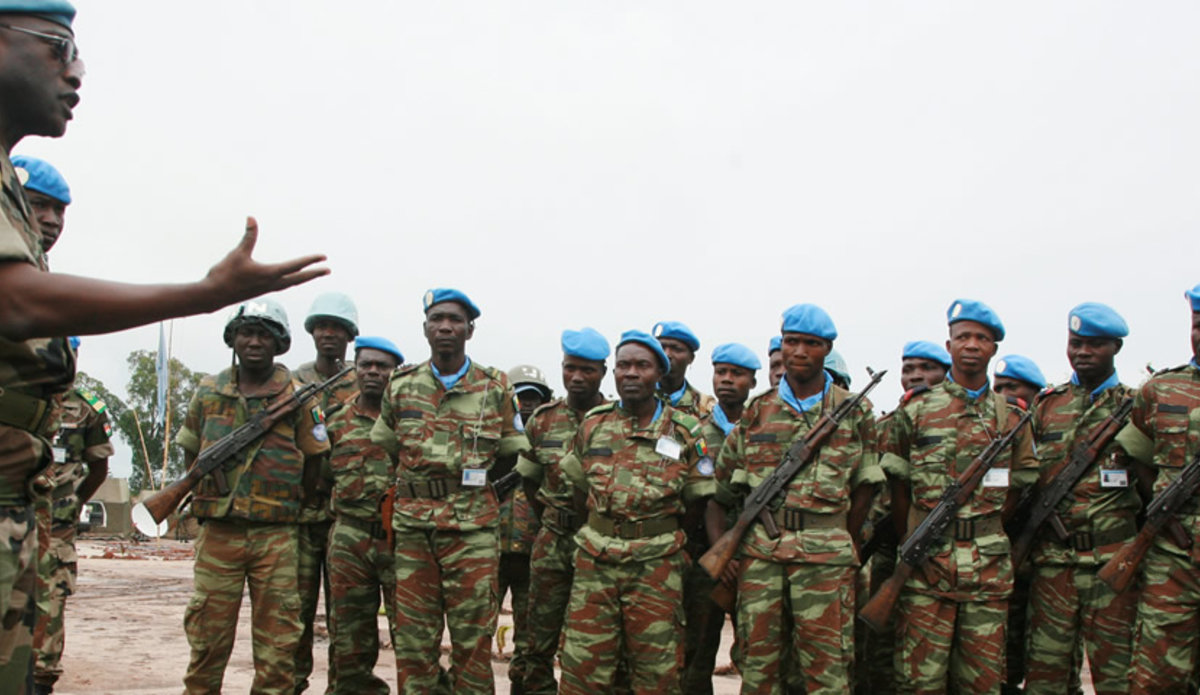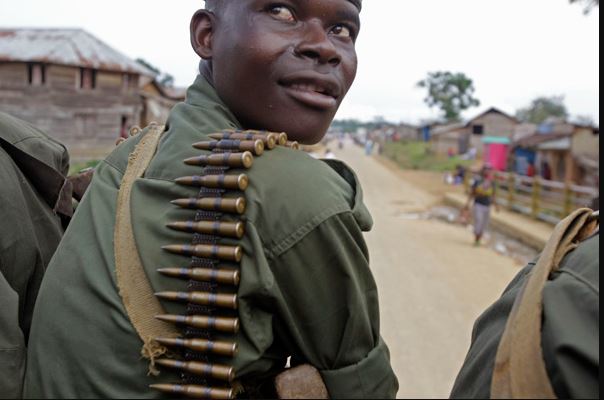
Protesters burn MONUSCO facilities
From your doctor, the judge in a court of law, to even philosophers, the process is always the same. If you want to solve a problem, you first look at its root causes. It is an immutable fact of life; so why is it that when it comes to the crisis in the Democratic Republic of Congo, the world’s most powerful nations, are so keen to dispense with it?
According to the most recent United Nations Group of Experts report (itself a document that largely seeks to look away from the causes of conflict, in favour of heaping blame on Rwanda), there are over 130 armed groups in the Democratic Republic of Congo (DRC), and counting. Three more have been created, only in the last two weeks.
For any kind of peace and stability to take root therefore, it would seem obvious that the country has to rid itself of these armed groups.
The international community, in the shape of the United Nations Organisation Stabilising Mission in the Democratic Republic of Congo (MONUSCO), has been in the country, for more than twenty years, at a cost of over a billion dollars a year.Their main objective was supposed to have been to help eradicate armed groups, and protect civilians, who are often victims of these groups.Twenty years since their deployment, armed groups mushroom, and in the last few months especially, there is not a day that goes by, when pictures of murdered civilians, in the DRC, are not displayed on the internet.
Most of the victims are in Eastern DRC, a part of the country, where to say the writ of the government does not run, would be a gross understatement.
The vacuum left by the state, has been filled by armed groups, among them, the Mai Mai, and its affiliates, which seem to metastasize almost weekly, and the self styled, Democratic Forces for the Liberation of Rwanda (FDLR).
The FDLR is in effect, the armed wing of the planners and perpetrators, of the 1994 Rwanda Genocide against the Tutsi. Its avowed aim is to return to Rwanda, in their words, to “finish where they left off.”
Over the years, they have replenished their forces, inculcating their genocide ideology into younger recruits. They have also effectively become part of the DRC establishment, working with the Armed Forces of the Democratic Republic of Congo (FARDC), within the Congolese politic, as local administrators, and as owners of various businesses, including illicit mining interests.

MONUSCO troops in DRC
With the connivance, and often support of the official security forces, the FDLR has sought to continue the genocide against the Tutsi, this time, targeting Banyamulenge, and other Kinyarwanda speaking Congolese.
Under the absence of the state, whose forces collaborated with their tormentors, instead of protecting them, the Kinyarwanda speaking Congolese took up arms, to protect their communities.
First as the National Congress for the Defence of the People (CNDP), in 2006, later becoming the now much talked about March 23rd Movement, or M23.
Unlike other armed groups in Eastern DRC, M23, like its precursor, is an effective fighting force, with clear objectives, notably, the end of the persecution of Kinyarwanda speaking Congolese, and full recognition of their rights as citizens of the DRC.
Contrary to the impression created by Western commentators, including many in the media, the group does not target civilians. It has called for, and continues to call for a negotiated settlement with the government, overtures which the government has consistently rejected, claiming instead, that it is Rwanda, behind the rebel group.

Member of FDLR Militia
It is astonishing to think that the conflict that has raged for months now, could be resolved at any moment of the DRC government’s choosing. But the government seems to prefer war, to negotiating with M23.
And so, the President, Felix Tshisekedi, and his officials, shuttle across the globe, asking anyone who will listen, to frown, and wag accusatory fingers at Rwanda.
Mindful of their material interests in the DRC, many in the international community, be it in the European Union, or United States of America, are happy to go along with any and every complaint, Tshisekedi and his officials make. No claim is too absurd.
The West needs and wants the DRC’s mineral riches, and if keeping a foothold in the DRC, means having to echo whatever fantasy, that is dreamed up by DRC politicians, however wild, then so be it.
With many in the media also falling in line, the M23 rebel group, is pointed at as the cause of the current conflict. Any suggestion of the genocidal murders, and persecution of their communities, the denial of their rights as citizens, as the root cause of the conflict, is either ignored, or dismissed. Instead, we are obliged to live in a topsy turvy world, where an armed response to an existing condition, becomes the cause of the ensuing conflict.
It is a world that suits DRC politicians, perfectly, one which they have learnt to manipulate, albeit somewhat crudely. Anything less than a full throated condemnation of Rwanda, for all of Congo’s ills, and a mob demanding the withdrawal of MONUSCO from the DRC, springs into violent, murderous, UN compound torching action.Just as suddenly as it erupts however, it is quickly halted. Like putting a dummy in a baby’s mouth, calm is usually restored by the magic words, “Rwanda must stop its support of M23.” And so, the game goes on, decade after decade.
But judging from the recent, unequivocal statements from Rwanda’s President, Paul Kagame, the game may have been overplayed. Rwanda’s patience with being scapegoated for the DRC’s problems, may have been exhausted, entirely, which may bring about fundamental change.
Change, if it is to come, cannot come soon enough, for the long suffering people of the DRC. The infantilisation of the DRC politicians, has come at an especially high cost to them. It needs not be this way.
As recently as 2021, there were apparently fruitful high level negotiations, led by President Kagame, and the newly installed Felix Tshisekedi. The two heads of state exchanged visits.

President Kagame with President Tshisekedi, in DRC
In May of that year, President Kagame, met his DRC counterpart in Congolese city of Goma. Security was understandably tight. The area surrounding Goma, was in turmoil, held hostage by one or other of the armed groups that continue to terrorise its inhabitants. There was no M23, which took up arms again, only in February 2022.
Asked whether Rwanda would support the DRC, in quelling the armed groups, there was no hesitation from President Kagame, in committing Rwanda’s help.
But it was not to be, and we are left wondering, whose interest was put above that of the entire Congolese nation, and the wellbeing of its people.

